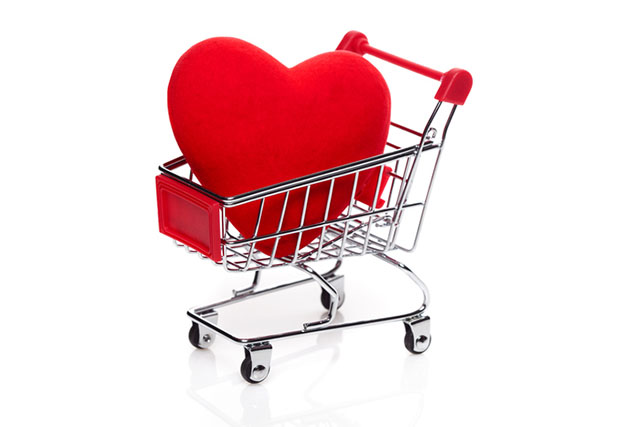
The greenest Valentine’s Day gift is the one you do not buy. Helping to keep Earth habitable by saying no to consumerism is an act of love.
Imagine the world we could live in if we showed our affection for the people we love year round without feeling obligated to prove it with material goods on a specific day.
Why pick on Valentine’s Day?
Because instead of a day for celebrating our love for one another, Valentine’s Day has become an occasion for compulsory shopping and promoting the idea that buying and giving the right things will bring you love and happiness.
Nowadays, Valentine’s Day is just another retail event aimed at keeping Americans shopping and spending between Christmas and Easter.
For Valentine’s Day 2017 the National Retail Federation predicts that Americans will spend $18.2 billion giving jewelry, evenings out, flowers, clothing, candy, gift certificates, and greeting cards to significant others and spouses, family members, friends, children’s classmates and teachers, pets, and co-workers.1
Think about that.
Nothing says “I love you” like a gift certificate and your cat is sure to appreciate a red heart-shaped food dish.
So how did it all begin?
Valentine’s Day History in Brief
There is little historical documentation available about how Valentine’s Day actually got its start, but it appears that one or more 3rd century Saint Valentines were involved. Some historians believe that the first person to write about Valentine’s Day in connection with romantic love was Geoffrey Chaucer in his 1382 book Parlement of Foules.
During the Renaissance (14th-17th centuries), writing valentine poetry and exchanging handmade valentines and tokens of affection gained popularity in Europe. In the 1800s, mass-produced valentines became available in Europe and the United States and some historians suggest that low postage rates contributed to the rise in the popularity of giving valentine greeting cards.
By the 20th century, Valentine’s Day was entrenched in the United States and well on the way to becoming the consumerism event it is today.
Valentine’s Day Environmental Impact
Several of the most popular Valentine’s Day gifts have significant environmental footprints including roses grown in South America and then flown to the U.S., diamonds mined in Russia and Africa, and chocolate made from cacao grown in equatorial rainforests around the world. The people who grow, mine, and process these products often work in hazardous conditions for low wages.
The environmental footprint of Valentine’s Day pales in comparison with a shopping extravaganza like Christmas, but inflicting harm on other people and the environment to celebrate love strikes a discordant note with me.
This Valentine’s Day, show your affection by being kind, considerate, appreciative, compassionate, and caring. Love is free and does not harm the planet or other people.
The greenest Valentine’s Day gift is the one you do not buy.
Related Posts
- Chocolate Dipped Strawberries – Delicious or Destructive?
- I am an American Citizen not just an American Consumer
- Keeping up with the Joneses – Let’s Not
- Let’s Take Back Thanksgiving – Opt Out of Consumerism
References
- NRF Says Consumers will Spend $18.2 Billion on Valentine’s Day, National Retail Federation, 02/01/17
Resources
- A darker side to Valentine’s Day, by Michelle Kuepper, ResearchGate, 02/10/16
- Do Diamonds on Valentine’s Day Really Say it All?, by Michael Lee & Pauline Miller, 02/15/16 (link inactive as of October 2019)
- History of Valentine’s Day, History.com, 2009
- The Women Suffering for your Valentine’s Day Flowers, by Oliver Balch, The Guardian, 02/12/15
- Valentine’s Day, Wikipedia
- Valentine’s Day is an Environmental Travesty, by Jeffrey Ball, New Republic, 02/12/14
- What are the Environmental Costs of Valentine’s Day Flowers?, by Kathleen Buckingham, World Resources Institute, 02/09/16

Another awesome post. Shot thru with real ideas and real information. Thank you and happy valentine’s day to you my friend!😊💜🌹
Happy Valentine’s Day to you too! Now you know why you didn’t get a card from me. : )